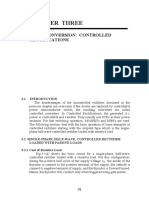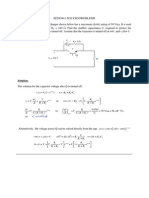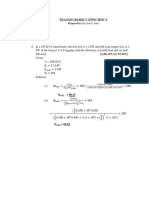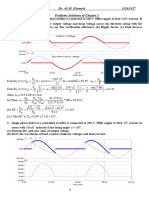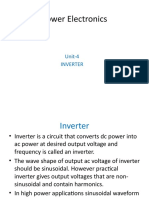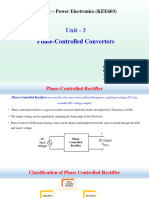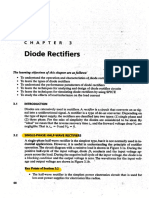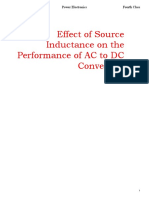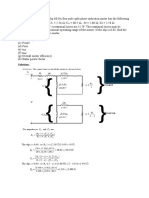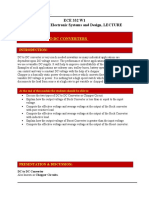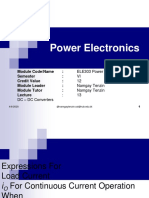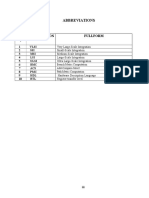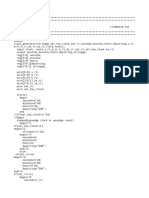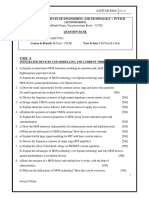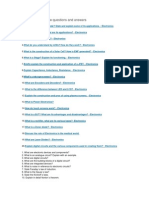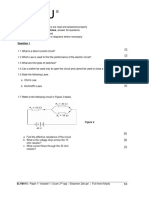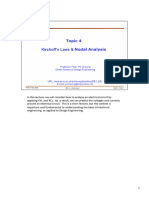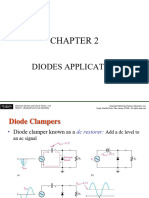0% found this document useful (0 votes)
1K views6 pagesSolved Problems On DC To DC
This document provides solutions to problems involving DC-DC converters. Problem 5.1 involves calculating various variables for a first quadrant chopper circuit with a resistive load. Problem 5.2 involves determining the chopping frequency and output voltage for a step-up chopper. Problem 5.3 calculates the average and RMS output voltages, effective input resistance, and efficiency of a chopper circuit. Problem 5.4 involves calculating current values for a chopper feeding an RL load. The solutions involve applying equations related to duty cycle, input/output voltages, resistance, inductance, and time parameters of the chopper circuits.
Uploaded by
Nihad DjebbarCopyright
© © All Rights Reserved
We take content rights seriously. If you suspect this is your content, claim it here.
Available Formats
Download as PDF, TXT or read online on Scribd
0% found this document useful (0 votes)
1K views6 pagesSolved Problems On DC To DC
This document provides solutions to problems involving DC-DC converters. Problem 5.1 involves calculating various variables for a first quadrant chopper circuit with a resistive load. Problem 5.2 involves determining the chopping frequency and output voltage for a step-up chopper. Problem 5.3 calculates the average and RMS output voltages, effective input resistance, and efficiency of a chopper circuit. Problem 5.4 involves calculating current values for a chopper feeding an RL load. The solutions involve applying equations related to duty cycle, input/output voltages, resistance, inductance, and time parameters of the chopper circuits.
Uploaded by
Nihad DjebbarCopyright
© © All Rights Reserved
We take content rights seriously. If you suspect this is your content, claim it here.
Available Formats
Download as PDF, TXT or read online on Scribd
/ 6




